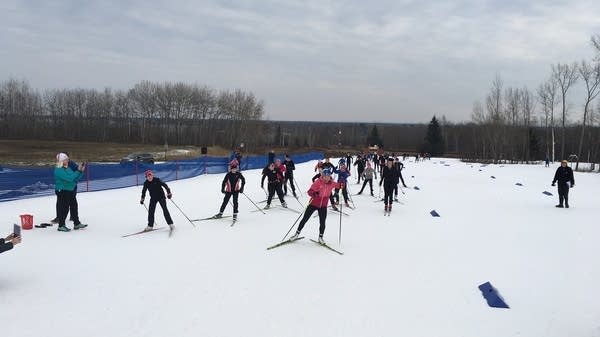Cross country skiers grapple with how to rid their sport of 'forever chemicals'

Retired Olympic gold medalist Kikkan Randall leads dozens of young Nordic skiers on a workout at the Grand Avenue Nordic Center in western Duluth, Minn., at the base of Spirit Mountain. For decades, PFAS, the group of so-called “forever chemicals,” have been used to make ultra-fast wax that’s prized by cross country skiers.
Dan Kraker | MPR News 2019
Go Deeper.
Create an account or log in to save stories.
Like this?
Thanks for liking this story! We have added it to a list of your favorite stories.


